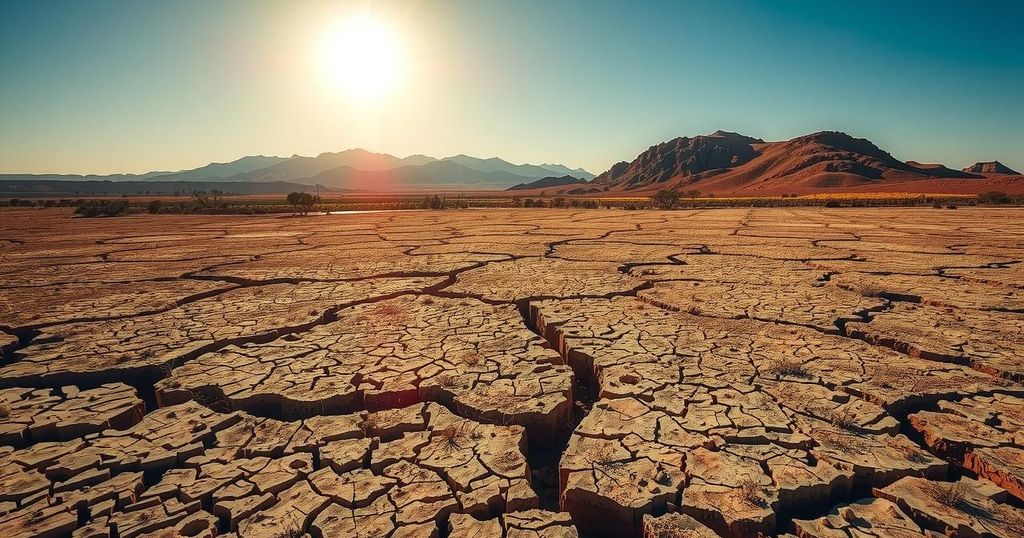Climate change
AFRICA, ARABIAN PENINSULA, ASIA, BRAZIL, CAIRO, CARDIFF, CARDIFF UNIVERSITY, CLIMATE, CLIMATE CHANGE, EGYPT, ENVIROMENTAL_ISSUES, EUROPE, EXTREME WEATHER, GLOBAL WARMING, GUARDIAN, HONG KONG, KATE, KATERINA MICHAELIDES, KENYA, MADRID, MICHAEL SINGER, MICHAELIDES, NAIROBI, NGO WATERAID, OF BRISTOL, RI, SINGER, SOUTH AMERICA, SPAIN, UK, UNIVERSITY, UNIVERSITY OF BRISTOL, US, WATERAID
Jamal Walker
0 Comments
The Impact of Climate Whiplash on Major Urban Areas Worldwide
A report reveals that climate whiplash affects many of the world’s largest cities, with 95% experiencing significant shifts toward wet or dry extremes over the past 40 years. This phenomenon threatens access to crucial resources like water and food, complicating urban infrastructure and impacting billions of people. Professors involved in the study note the unpredictable nature of these changes and emphasize the urgent need for strategic measures to address these challenges.
Rising temperatures are forcing major cities worldwide to grapple with drastic climate fluctuations, referred to as “climate whiplash.” This phenomenon involves transitions between wet and dry extremes, often leading to critical consequences. A recent report commissioned by the NGO WaterAid examined climate patterns over the last 40 years in the world’s 100 most populous cities, revealing that 95 percent of these locations are experiencing significant shifts towards either wetter or drier conditions, which pose threats to clean water access, sanitation, food security, and community stability.
With over 4.4 billion people residing in urban settings, these growing populations exacerbate the strain on water supplies, sewage systems, and flood defenses. Concurrently, the effects of climate change render existing infrastructures inadequate, complicating new construction efforts. Professor Katerina Michaelides from the University of Bristol noted, “Our study shows that climate change is dramatically different around the world,” highlighting the divergent experiences between regions. In contrast to the increasingly arid conditions in Europe, the Arabian Peninsula, and much of the US, cities in South and Southeast Asia face significant flooding and rain events.
More than 20 percent of the cities analyzed are witnessing a considerable reversal in climate extremes, shifting between wet and dry conditions. The capacity of warmer air to absorb more moisture facilitates these transitions, often resulting in droughts followed by intense rainfall. Notably, cities such as Cairo, Madrid, and Riyadh reflect these sharp climate shifts. Conversely, prolonged droughts can lead to severe water shortages and disrupt food supplies; as exemplified by Brazil’s devastating drought last year.
The impacts of floods can be equally catastrophic, contaminating drinking water, destroying crops, and killing livestock, in addition to obliterating essential infrastructure. Instances of climate whiplash, as noted by Professors Michaelides and Singer during their research in Nairobi, Kenya, illustrate devastating cycles of drought followed by torrential rains leading to flash flooding, death, and displacement. Los Angeles’ wildfires this January underscored this phenomenon, where the aftermath of a wet period created conditions ripe for wildfires during subsequent dry spells.
Nairobi and Los Angeles are part of the 15 percent of cities affected by such climate whiplash, alongside Baghdad, Bangkok, Melbourne, Jakarta, and Hangzhou. These rapid climatic shifts challenge cities’ abilities to adapt and respond effectively, ultimately impacting residents’ livelihoods and overall quality of life.
The findings from the WaterAid report underscore a concerning trend of climate instability in the world’s largest urban areas. As cities undergo dramatic shifts in weather patterns, the impacts on water resources, food security, and resident wellbeing are becoming increasingly severe. The identification of cities facing climate whiplash calls for urgent attention and strategic planning to mitigate risks and enhance resilience against future climate disruptions.
Original Source: macaonews.org




Post Comment